|
Sandro Botticelli.org, welcome & enjoy!

|
|
Here are all the paintings of Justus van Gent 01
| ID |
Painting |
Oil Pantings, Sorted from A to Z |
Painting Description |
| 97780 |
 |
Cardinal Bessarione |
circa 1476(1476)
Medium oil on panel
cyf |
| 83819 |
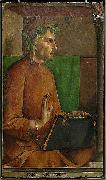 |
Dante Alighieri |
Date ca. 1473-1475
Medium Oil on panel
Dimensions 111.5 x 64.5 cm (43.9 x 25.4 in)
cjr |
| 87778 |
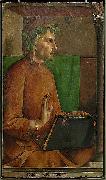 |
Dante Alighieri |
1473-1475
Medium Oil on panel
Dimensions 111.5 x 64.5 cm (43.9 x 25.4 in)
cyf |
| 97434 |
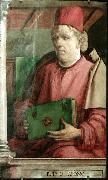 |
Pietro Abano |
1473-1475
Medium oil on panel
Dimensions 96 X 63 cm
cyf |
| 84297 |
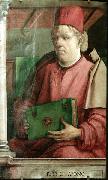 |
Pietro d Abano |
Date ca. 1473-1475
Medium Oil on panel
Dimensions 96 x 63 cm (37.8 x 24.8 in)
cjr |
| 88196 |
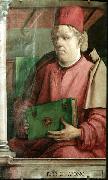 |
Pietro dAbano |
1473-1475
Medium Oil on panel
Dimensions 96 x 63 cm (37.8 x 24.8 in)
cyf |
| 97435 |
 |
Pope Sixtus IV |
circa 1473-1475
Medium oil on panel
Dimensions 116 X 56.4 cm
cyf |
| 90426 |
 |
St Augustine |
Oil on wood, 119 x 62 cm Musxe du Louvre, Paris
Date c. 1474(1474)
Dimensions Height: 119 cm (46.9 in). Width: 62 cm (24.4 in).
cyf |
| 88938 |
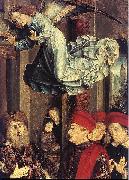 |
The Institution of the Eucharist |
between 1473(1473) and 1475(1475)
Medium oil on wood
cyf |
| 88939 |
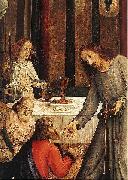 |
The Institution of the Eucharist |
between 1473(1473) and 1475(1475)
Medium oil on wood
cyf |
| 90337 |
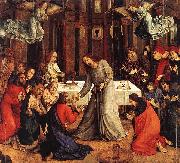 |
The Institution of the Eucharist |
between 1473(1473) and 1475(1475)
Medium oil on panel
cyf |
|
|
| Justus van Gent
|
| (or Joos van Wassenhove), Justus or Jodocus of Ghent, or Giusto da Guanto (c. 1410 - c. 1480) was an Early Netherlandish painter who later worked in Italy.
The public records of the city of Ghent have been diligently searched, but in vain, for a clue to the history of Justus or Jodocus, whom Vasari and Guicciardini called Giusto da Guanto. Flemish annalists of the 16th century have enlarged upon the scanty, unsourced statements of Vasari, and described Jodocus as a pupil of Hubert van Eyck. The registers of the Guild of St Luke at Ghent comprise six masters of the name of Joos or Jodocus who practised at Ghent in the 15th century. But none of the works of these masters has been preserved, and it is impossible to compare their style with that of Giusto.
Federico da Montefeltro and His Son, GuidobaldoBetween 1465 and 1474, this artist executed the Communion of the Apostles which Vasari described, and which is now in the Galleria Nazionale delle Marche in Urbino. It was painted for the brotherhood of Corpus Christi at the bidding of Frederick of Montefeltro, who was introduced into the picture as the companion of Caterino Zeno, a Persian envoy at that time on a mission to the court of Urbino. From this curious production it may be seen that Giusto, far from being a pupil of the putative Hubert Van Eyck, must have been studied with a later master, possibly Dieric Bouts.
As a composer and draughtsman Giusto compares unfavourably with the better-known painters of Flanders; though his portraits are good, his ideal figures are not remarkable for subtlety of character and expression. Technically, he compares on a level with that of Geertgen tot Sint Jans, whose most famous pictures are preserved in the Kunsthistorisches Museum at Vienna. Vespasian, a Florentine bookseller who contributed much to form the antiquarian taste of Frederick of Montefeltro, states that this duke sent to the Netherlands for a capable artist to paint a series of ancient worthies for a library recently erected in the palace of Urbino. It has been conjectured that the author of these 28 portraits of "Famous Men," which are still in existence at the Louvre and in the Galleria Nazionale delle Marche at Urbino, was Justus van Gent.
Seven (?) Liberal Arts: a young man (Constanzo Sforza?) before Music (National Gallery, London). Another painting from this cycle, with Federigo da Montefeltro before Rhetoric was destroyed in Berlin in 1945Yet there are notable divergences between these pictures and the Communion of the Apostles. Still, it is possible that Giusto should have been able, after a certain time, to temper his Flemish style by studying the masterpieces of Santi and Melozzo, and so to acquire the mixed manner of the Flemings and Italians which these portraits of worthies display. Such an assimilation, if it really took place, might justify the Flemings in the indulgence of a certain pride, considering that Raphael not only admired these worthies, but copied them in the sketch-book which is now the ornament of the Venetian Academy. There is no ground for presuming that Giusto da Guanto is identical with Justus d'Allamagna who painted the Annunciation (1451) in the cloisters of Santa Maria di Castello at Genoa. The drawing and coloring of this wall painting shows that Justus d'Allamagna was as surely a native of south Germany as his homonym at Urbino was a born Netherlander.
|
|
 All the Sandro Botticelli's Oil Paintings
All the Sandro Botticelli's Oil Paintings

Supported by oil paintings and picture frames

Copyright Reserved
|

